How To Deal With Slow Cannabis Growth

- 1. Lights
- 1. a. Incorrect light spectrum
- 1. b. Interruption of the light cycle
- 2. Stress from accidental damage
- 3. Low-stress training
- 4. High-stress training
- 5. Environment
- 6. Root problems
- 6. a. Overwatering
- 6. b. Underwatering
- 6. c. Rootbound
- 7. Nutrient deficiencies
- 8. Bugs or pests
- 9. Genetics
- 10. Incorrect ph levels
- 10. a. Pot size
- 11. In conclusion
Under optimal conditions, cannabis plants grow fast, especially autoflowering varieties. There’s a reason it’s called a weed! When a plant has all of its needs met—in the form of water, light, nutrients, and air exchange—it’ll grow noticeably one day after the next. However, things don’t always go to plan. Numerous factors can cause slow growth to occur, including pests, disease, and nutritional deficiencies. In this article, we’re going to guide you through all of these possibilities, and what you can do to fix them to rescue your plant and secure a great yield at the end of the growing cycle.
If you feel like your plants are not growing as fast as they should then it’s most likely there’s something wrong, slow growth can be a result of a number of things. If your plants are suffering from slow root growth, or you're asking yourself why your plants are growing so slow, here are a couple of tips to help you fix your problem, remember these problems can affect cannabis in all stages of plant growth.
When growing cannabis seeds there are a lot of variables that can affect the growth and final result of your harvest. From genetics, possible nutrient deficiencies, root system, and pests problems to the environment, you need to make sure everything is okay if you want to have a smooth growth cycle. Providing your plants with a warm slightly humid climate will not only help you to deal with their slow growth but can result in a bigger and better harvest.
1. Lights
Not enough light is one of the main problems associated with slow growth. Not providing enough light will cause your cannabis to take way longer to develop because they don’t have a good amount of light to photosynthesize. When your plants are still young you can see this, for example, when your seedling is stretching too much, this is a sign that your plant is not getting enough light and is trying to get closer to it.
Now, have in mind that you can also give your cannabis too much light (if the environment is not appropriate for the amount of light you’re providing). This happens because most high-intensity lights have to be used in combination with higher CO2 levels so your plant can absorb the light properly, if the CO2 level is too low your plant can get stressed and show heat stress signs, resulting in slow growth.
How to deal with it
If you’re experiencing light-related problems (like heat stress symptoms), you should try to adjust the intensity (with a dimmer) or the height your light fixture is at. A good way to test this is to keep your hands under the light for around 30 seconds, if it’s too hot for you, it definitely is too hot for your plants.

As a general guide, LEDs should be kept between 60-100 cm from your plants (depending on the model) while light bulb fixtures should be around 30cm from your canopy.
Incorrect Light Spectrum
The light spectrum will also affect plant growth so you need to make sure to use the right spectrum for each stage of plant growth. This doesn’t mean your plants won’t grow under a different spectrum but if you want your plants to grow fast and healthy, make sure to provide a blue spectrum during the vegetative stage and a red spectrum during the flowering stage. Cannabis plants also need to be exposed to the correct light intensity to grow optimally. A light that’s too weak simply won’t allow a plant to create all of the energy that it needs to conduct photosynthesis. Even a powerful light placed too far away from the top of the canopy can produce sub-par results. In order to master light intensity, you need to become familiar with two measurements: Lux and PPFD.
Let’s cover lux first. This metric measures lumens—the amount of visible light that the human eye can detect. More specifically, it measures the number of lumens that fall onto an area of 1 meter squared. However, plants can photosynthesize using light that isn’t visible to the human eye, meaning lux isn’t the best way to measure light intensity. However, lux meters are relatively cheap, meaning they’re accessible to most cannabis cultivators. If you’re on a budget, measuring lux is better than nothing. Ideally, you need to place your light in a position that provides at least 5,000 lux during the seeding stage, 15,000 lux during the vegetative stage, and 45,000 lux during the flowering phase of the growing cycle.
Now, let’s talk about PAR. This acronym stands for photosynthetically available radiation and is therefore much more useful and appropriate when measuring light intensity for cannabis plants. PAR wavelengths fall into the spectrum between 400–700 nanometres (nm). To measure PAR, growers need to use quantum PAR meters which are much more expensive than lux meters. These devices measure PAR in photosynthetic photon flux density (PPFD). Ideally, you should aim for a PAR reading of 300–400 in order to ensure that your plants are exposed to an adequate intensity of light to optimize growth.
If you notice your plant seems to be growing slower than you’d like, consider adding a lux meter or PAR meter to your arsenal of cultivation equipment. Once you position your light at the desired height using these devices, you’ll notice an incredible change in growing speed. Your plants will finally have enough light in order to photosynthesize at the desired rate, enabling them to make as many sugars as they need to fulfil important physiological processes.
Interruption of the Light Cycle
Photoperiod cannabis is really sensitive to light leaks during the light cycle. You always have to there are no holes in your tent where light from the street lamp, for example, could leak in. Light leaks can not only turn your plants' hermie but can also cause a hormone imbalance that could reveg your plants, which will end up extending your grow cycle, and affect yields and quality. So if you’re having issues with light leaks make sure to check out autoflowers as they are not affected by light leaks because they flower based on age and not the light cycle to do so.
2. Stress From Accidental Damage
If your fan or light fixture accidentally falls over your cannabis, there could be some serious problems such as broken branches or even worse, and this can slow down growth significantly. When any type of damage occurs, your plant will have to move around nutrients and vitamins, for example, to the areas that need it the most, meaning that your cannabis will redirect the resources needed for new plant growth to repair the damage.
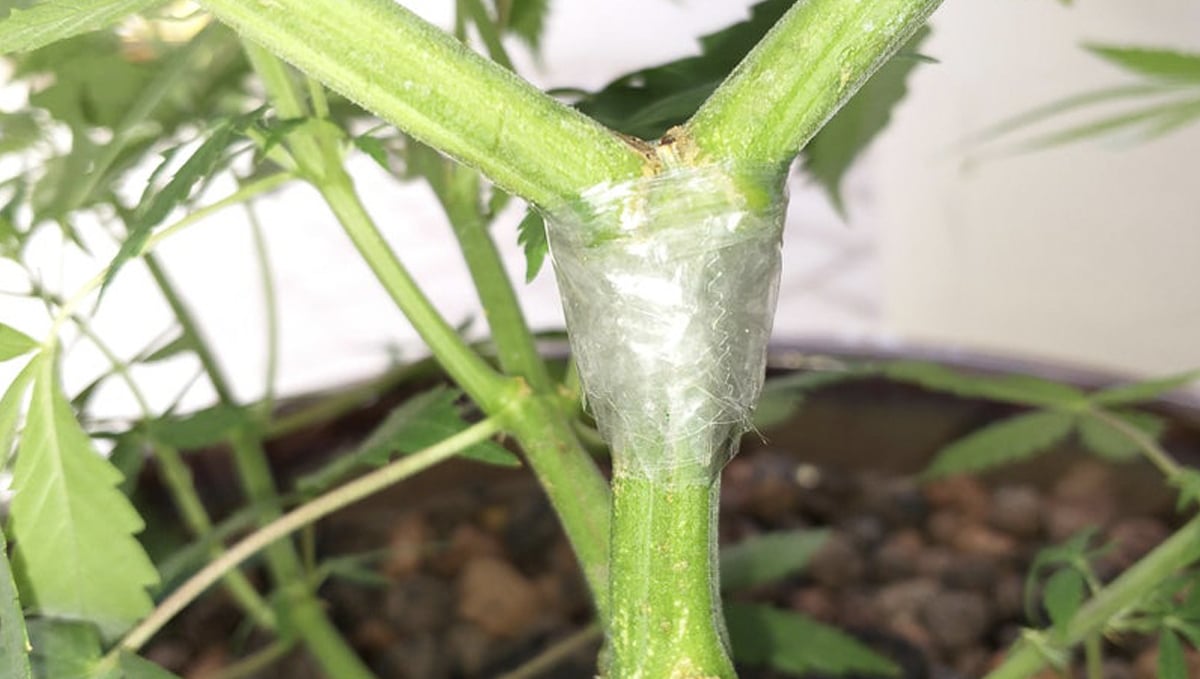
In most cases, your plant will most likely slow down growth for a couple of days until it finished recovering and can continue growing normally. Just remember that seedlings are super fragile so double-check the equipment and make sure everything is hung up properly before starting your grow cycle.
How to deal with it
There’s not much you can do if your cannabis has suffered an accident, so first make sure you know what caused it. If a branch snapped due to strong winds you can use bamboo stakes or a scrog net to provide support; If a piece of equipment fell on your cannabis and broke a branch, all you can do is try to fix it with duct tape to help it hold it in place until it heals and check the equipment before starting your next grow cycle.
3. Low-Stress Training
Plant training is used by almost all cannabis growers to adjust plant growth and end with the best results possible in a specific grow setup but it may end up having the opposite result if done too aggressively and slow down growth. As the name says, low-stress training will stress your cannabis, but not as much as high-stress training, this allows you to do it more often if needed, but you will have to keep an eye on your plant and keep good conditions to minimize stress.
LST is an easy and effective way of molding plant growth to your grow tent but even minimal training such as pruning can be bad.
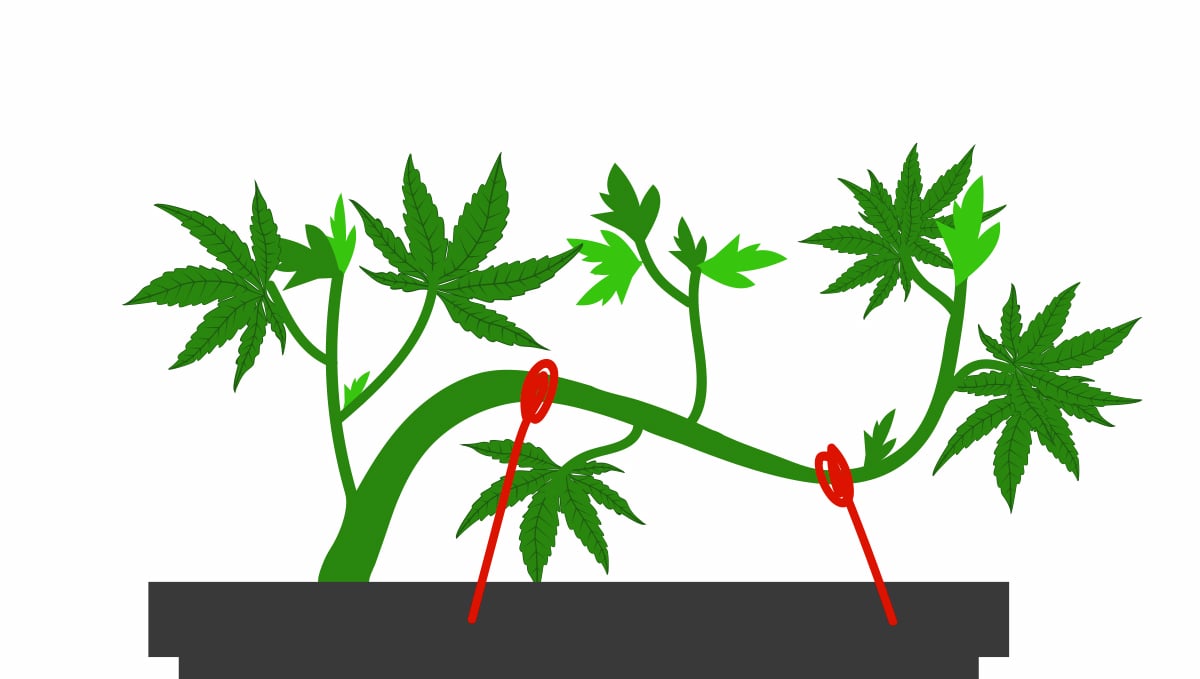
For example, pruning a lot at a time or very frequently will cause your plant to slow down growth in order to recover and this can be very bad, especially with autoflowers because it may end up stunting growth for days or even weeks, so make sure you do it gradually and carefully.
This also applies to tying down the branches or simply organizing the canopy under a scrog net, if you apply too much pressure or tie the branches too tight you may end up hurting your plant and this will cause stress so make sure you do it carefully.
How to deal with it
Luckily, it’s can be easy to help your plant recover from slow growth, f you’ve pruned too much there’s not much you can do other than making sure the growing conditions are on point to allow your plant to recover faster but, if you were LSTing and the ties are too tight, you can remove them and tie them again, paying attention to what you’ve done incorrectly before to avoid doing it again.
4. High-Stress Training
You can end up damaging your cannabis with low-stress training techniques as well as with high-stress training techniques, although it may be easier to damage your plant with HST because it literally consists of mutilating your cannabis plant.

Now, this doesn’t mean that your plant will only get stressed if you mutilate it, as said above you can also stress your cannabis with low-stress training.
Just remember that HST will always slow down growth because you are cutting away a part of the cannabis plant so make sure you do it early rather than late and that the conditions are on point so your cannabis can recover fast and continue growing normally.
How to deal with it
Now, when dealing with the recovery period after LST or HST, the only thing you can do is provide the best growing conditions possible to boost the basic processes such as transpiration and photosynthesis, this will allow your plant to recover faster.
If you’re not sure what the conditions should be, you can always take a look at a VPD chart to ensure you’re providing what your cannabis needs but other than that, it’s just a matter of seeing how your plant reacts and maybe not performing any training if your plant is in bad conditions.
5. Environment
Even though some plants can withstand harsh environments, most cannabis plants enjoy a warm slightly humid climate, it’s essential you have a thermo hygrometer to measure this and adjust when necessary and avoid stunted growth. If the temperature in your grow room is below 15°C or above 30°C for too long, you will start to see slower growth and if left like that for too long, you’ll see signs of unhappy cannabis like droopy leaves or the leaves starting to yellow, crisp and die.
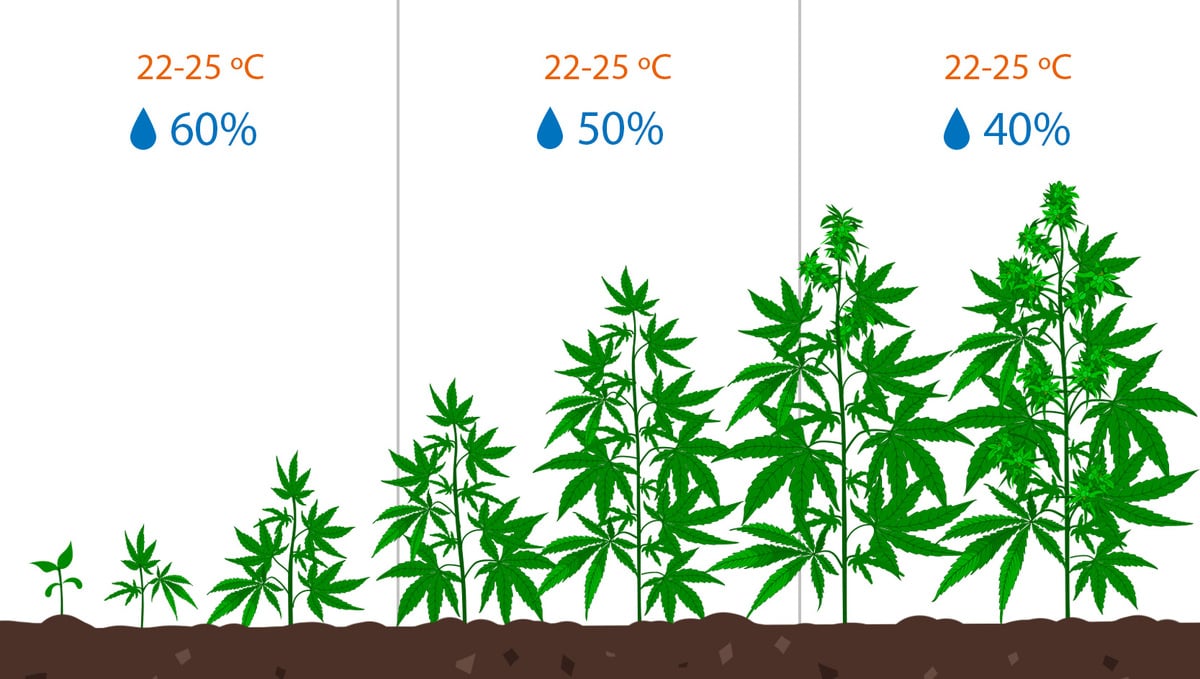
This also applies to humidity. Humidity levels below 35% can stunt growth and if they’re even lower than that (around 25%), you’ll start to see signs of deficiency on your plant.
A humidity level higher than 70% can also have a toll on your cannabis plant, slowing your plant’s growth, making them droopy because it makes it harder for the plant to move water internally.
How to deal with it
If your seedlings are not growing or you're wondering why your seedlings are growing so slow, this could be the problem. To avoid environment-related problems you have to ensure your growing environment is optimal for your cannabis.
For your cannabis plants to thrive you need to provide a temperature of around 22-25 celsius and a humidity level of 60% for seedling, 50% in the vegetative stage, and 40% in the flowering stage.
| Stage | Humidity Level |
|---|---|
| Seedling | 60% |
| Vegetative | 50% |
| Flowering | 40% |
These numbers are just a guideline, you should always look for the signs your plants give you and adjust the environment accordingly.
6. Root problems
Unless you’re growing in a hydroponic (or aeroponic) setup you won’t be able to see your plant’s roots.
Keeping a good environment for your cannabis also includes maintaining the medium oxygenated and with the right amount of water. Root problems are the main cause of slow growth with new growers, adjusting and maintaining a good growing medium for the roots is the best way to fix stunted growth in plants. The lack of appropriate care with the roots can cause the following problems:
Overwatering
Overwatering is a common occurrence with new growers, excessive watering inhibits oxygen from reaching the roots and can result in the drowning of your plant.
Overwatered plants will start to droop, show slower growth, start yellowing, and show signs of deficiencies because they can’t absorb nutrients properly.
Underwatering
Underwatering isn’t as common as overwatering but can also affect your plant in a bad way.
If there’s a lack of water in the medium, your plant will show signs similar to the signs of overwatering but instead of the leaves looking “fat” because of the excess of water, they will look thin and fragile because there’s no water (or a tiny amount) in them.
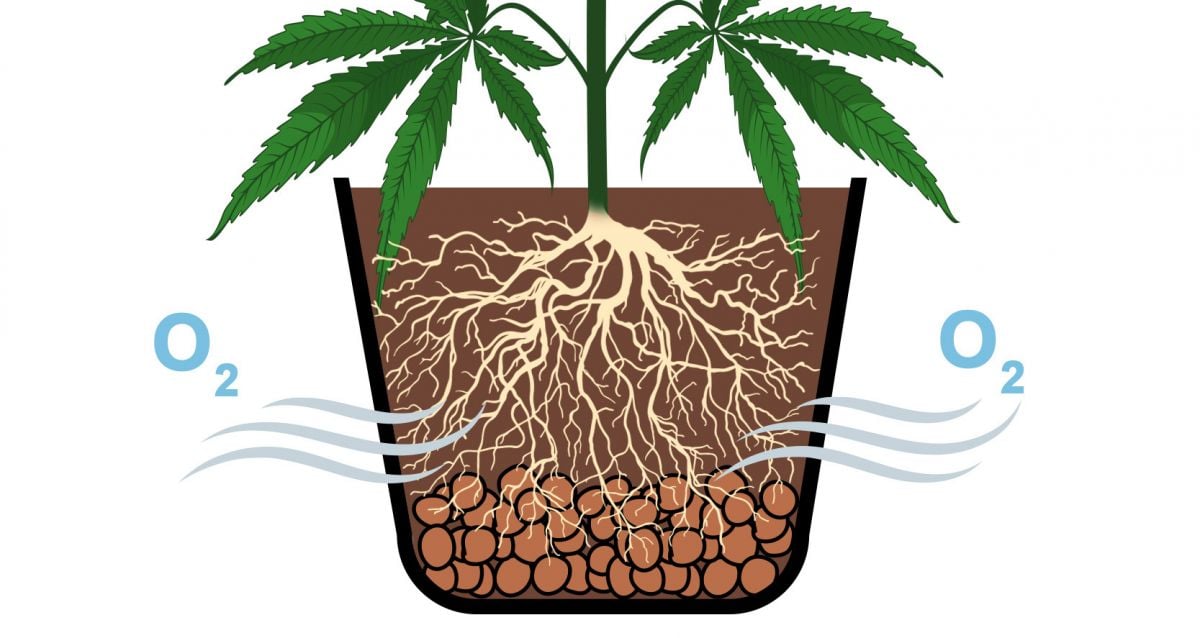
Rootbound
Rootbound happens when you plant your seeds in a small pot or container and the roots don’t have any more room to grow. When this happens, your plant will start to show different symptoms that can confuse you, when you see your plant getting much wider than the pot you should start thinking about transplanting it, failing to give the roots the space they need to grow will result in droopy leaves and other signs associated with overwatering of nutrient deficiencies.
How to deal with it
To avoid root problems you have to make sure you’re giving the roots enough oxygen, room to grow, and water only when needed. You should water only when at least 60% of the medium is dry and transplant your cannabis when she's growing out the pot she’s in. If you’re having problems with this we recommend you try different mixes of soil, perlite, and coco fiber, this will help you provide the right amount of oxygen and water to the roots.
7. Nutrient deficiencies
Plants need nutrients to grow, depending on the medium you’re growing in, you’ll need to not only provide all the macronutrients but also a good amount of micronutrients. You also have to remember that nutrient absorption is directly related to the pH level.
If you don’t provide the amount of nutrients your plant needs or if you fail to adjust the pH level your plant won’t be able to grow properly and will result in nutrient deficiencies, stunting growth, and damaging the leaves.
How to deal with it
To fix this you need to adjust the amount of nutrients you’re giving your plant and check the pH level every day.
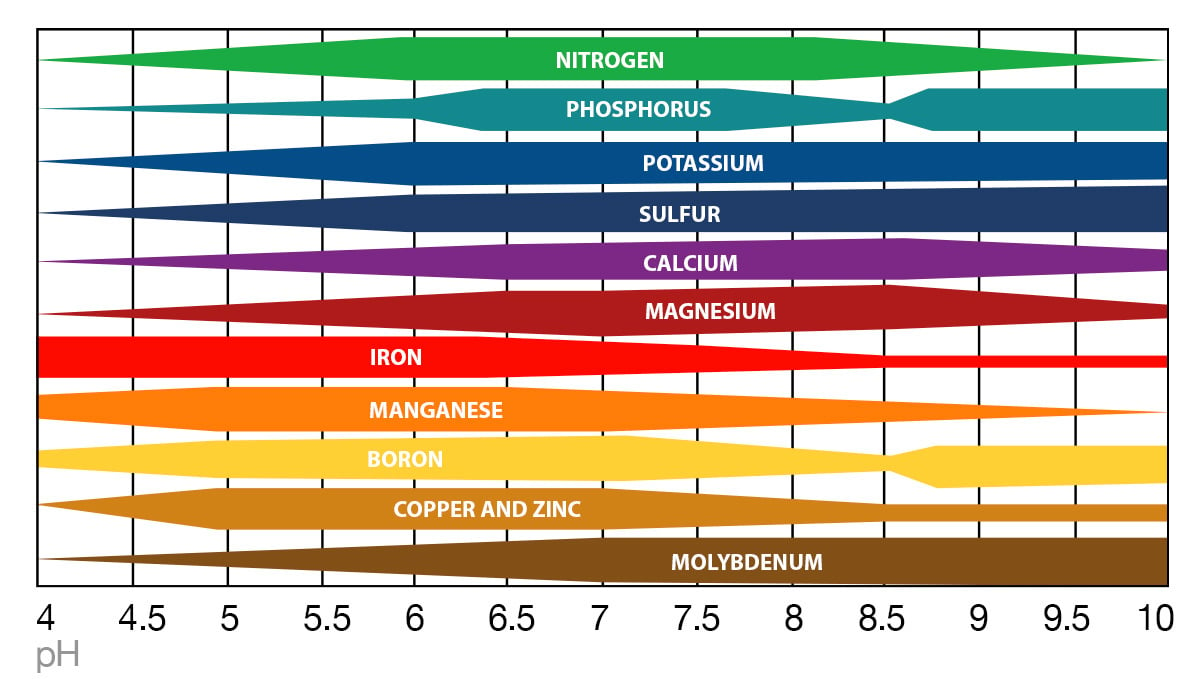
If you’re giving the right amount of nutrients then the problem will most likely be the pH level, remember the pH level changes according to the medium you’re growing in and you should always check it and adjust it if you want your cannabis to grow healthy. It is crucial you keep your plant well-fed and with the correct pH levels, if you see even the slightest yellowing on the leaves then your plant is most likely not growing properly.
8. Bugs or pests
Bugs and pests feed on your plant, they can feed on the sugars or on the plant matter, either way, they will damage your plant and slow its growth. Some bugs like Spider mites can also rot the buds, making them unhealthy to smoke so it’s crucial you keep your plant healthy and check on them every day to spot bugs early.
How to deal with it
There are different ways to deal with bugs but the best way is to prevent them. You can also spray your cannabis with a mix of water and a small dose of organic insecticide to prevent them although this is not recommended, insecticides should only be used when you already have bugs and are used to eliminate and not to prevent them.
By checking on your plants every day you avoid bugs, you can also spread yellow sticky traps so you can spot them early.
There are also integrated pest management strategies that you can use in order to fight pests in a more natural fashion. If you’re growing indoors, it doesn’t mean you’re free from pests. You can add pest screens to any openings in your tent to form a physical barrier to keep pest species from entering. Upon encountering pests, many growers like to use beneficial insects in order to target specific species. For example, ladybug larvae are avid aphid predators and can easily take out large populations of these sap-sucking pests.
Biocontrol agents such as the bacterium Bacillus thuringiensis are also very effective against some pests, including fungus gnats. You can apply bottled sprays onto affected areas. Once applied the bacteria forms and releases spores. These small packages of DNA produce a toxic protein crystal that damages the guts of some pests and stops them from feeding.
9. Genetics
Slow plant growth can also be the result of bad genetics, even though you cannot change this once you’ve already started to grow your plant, you should always start with good genetics. This will save you time and money and can result in a bigger and better harvest.
How to deal with it
If you’re dealing with slow plant growth and can’t seem to get to the root of it, the cause of your problems can be bad genetics. If you want a plant that really thrives and grows perfectly we recommend our new Gorilla Cookies Auto.
This strain is very easy to grow and can produce up to 600gr/m2 of extremely resinous buds with basic maintenance, so with basic care you can end up with a great harvest.
10. Incorrect pH Levels
Incorrect pH levels are probably the most common reason for slow growth. This happens because cannabis plants can only absorb nutrients in a specific pH range so if the pH levels are incorrect your plants will not be able to absorb food, even if it’s present in the substrate.
HOW TO DEAL WITH IT
In order to fix this, all you have to do is check and adjust the pH levels, but this depends on the specific substrate you’re growing in. Remember that you will also need a pH Up or pH Down solution, but all you have to do is adjust the pH to 6.5 - 7.0 in soil, 5.6 - 5.8 in hydro, and 6.0 - 6.3 in coco fiber or soilless grows.
11. Pot Size
In general, growers start seeds in plastic cups and transplant them to bigger pots as the plants grow but starting your plants in super big pots can cause several problems such as overwatering as the substrate which will retain much more water than your seedlings can absorb. SO to avoid problems like this, make sure to start in smaller pots or plastic cups and only transplant them to a larger pot once they have big enough. In general, you should only transplant a young plant into a 7-liter or bigger pot once they have developed at least 5 pairs of true leaves.
HOW TO DEAL WITH IT
As mentioned, the only way to avoid this is to use the right pot size, so once your seedling is big enough, follow the table below and make sure to transplant directly to the right pot in order to avoid any issues.
| Recommended Pot Size Based on Plant Size | |
|---|---|
| Pot Size | Plant Size |
| 3 liters | 35 - 50 cm |
| 5 - 7 liters | 60 cm |
| 8 - 10 liters | 100 cm |
| 12 liters | +130 cm |
12. In Conclusion
It’s fairly common to deal with cannabis stunted growth, especially if you’re dealing with a cannabis seedling growing slowly. Slow plant growth, either slow cannabis flowering or vegetative growth, can be the result of a not-optimal growing environment or even a mix of some of the elements said above.
So if you’re dealing with cannabis slow growth or if you’re having problems with your plants, we recommend checking every one of the topics we talked about and if you cannot solve your problems try to grow good quality genetics in your growing cycle. This can not only solve your problems but surprise you with the results you’ll have.








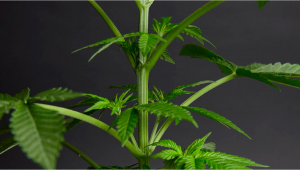
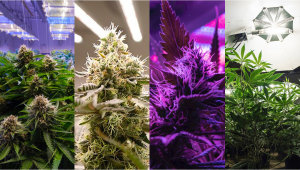


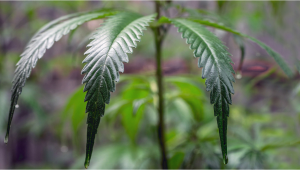

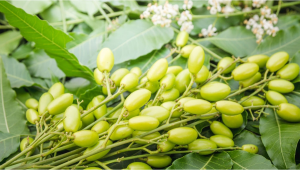
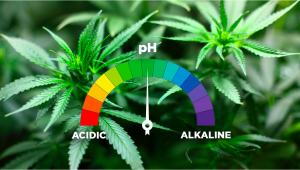
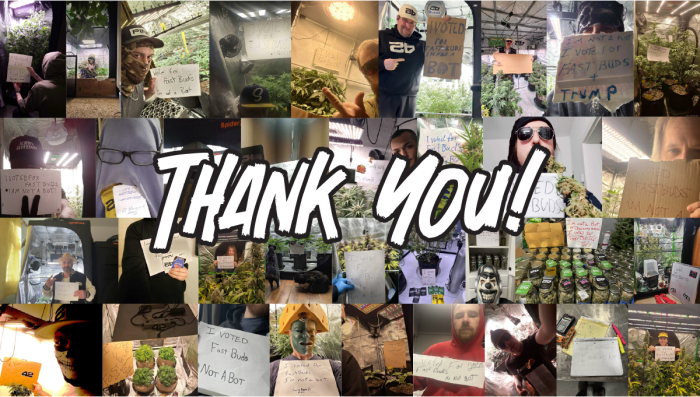

Comments